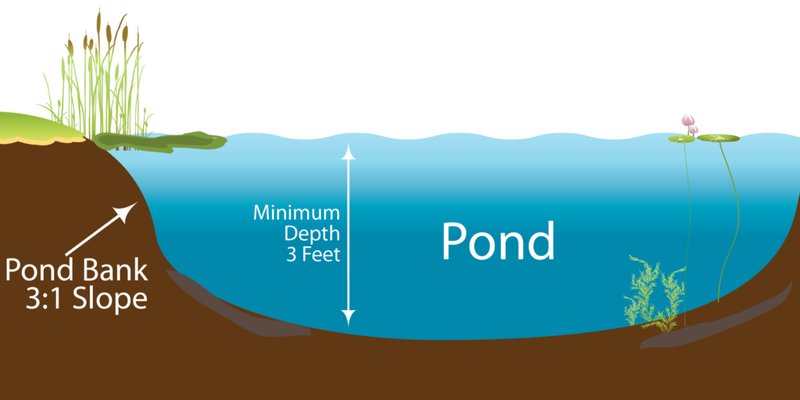
Imagine your pond as a mini ecosystem where everything works together. It’s like a symphony, with each element playing its part to create a harmonious setting for salmon. Whether you’re a seasoned pond owner or just starting, understanding these conditions is crucial. Let’s dive into how you can create ideal pond conditions for salmon care and why each aspect matters.
Understanding Salmon Habitat Needs
Salmon are unique creatures that require specific habitats for their growth and well-being. Their natural environments range from rivers to oceans, but when you’re talking about a pond, it’s essential to mimic those conditions as closely as possible.
Here’s the thing: salmon aren’t just looking for any water; they need a balanced environment. This includes clean, cool water, adequate depth for swimming, and proper filtration to keep their habitat healthy. Without these elements, your salmon can face stress or health issues, which can ultimately affect their growth and survival.
One important thing to consider is that different salmon species may have slightly different needs. For instance, while some might thrive in warmer waters, most prefer cool, crisp conditions. Keeping this in mind will help you create the perfect haven for your finned friends.
Ideal Temperature Ranges for Salmon
The temperature of your pond is one of the most critical factors in ensuring that your salmon are comfortable. Generally speaking, salmon thrive in cooler water, typically between 55°F to 65°F (13°C to 18°C). If the water gets too warm, say above 70°F (21°C), it can stress the fish.
Why is temperature so important? When the water temperature rises, it can lead to decreased oxygen levels, making it harder for salmon to breathe. Think of it like trying to run a marathon in a sauna—it’s just not going to work well!
To maintain these temperatures, you might need to invest in a pond chiller or ensure efficient shade from overhanging trees. Regularly checking the temperature using a simple thermometer can also help you keep tabs on the conditions.
Pond Depth: A Salmon’s Comfort Zone
When it comes to pond depth, salmon prefer a minimum depth of 3 to 5 feet. This depth provides them with room to swim freely and find cooler spots during hot weather. Plus, deeper water helps regulate temperature fluctuations that can occur in shallower ponds.
Imagine trying to swim in a kiddie pool versus a deep swimming pool. The kiddie pool gets warm quickly under the sun and doesn’t give you much room to move. Salmon feel the same way in shallow ponds.
Additionally, having deeper areas allows salmon to escape from predators and hide, promoting a sense of security. Creating a varied depth in your pond design can help cater to their needs, so consider adding some deeper sections if you’re just starting out.
Importance of Filtration for Salmon Health
Another crucial element in maintaining ideal pond conditions for salmon is efficient filtration. Healthy water quality is vital for salmon; they require clean, oxygenated water to thrive. A good filtration system helps remove waste, excess food, and other impurities that can harm their environment.
There are different types of filtration systems available, but a combination of mechanical, biological, and chemical filtration usually works best. Mechanical filtration physically removes debris; biological filtration uses beneficial bacteria to break down waste; and chemical filtration tackles toxins in the water.
Here’s a pro tip: regularly check and clean your filtration system. A clogged filter can lead to poor water quality, which can stress your salmon.
Creating a Balanced Ecosystem with Plants
Adding aquatic plants to your pond can significantly improve the habitat for salmon. These plants do more than just look pretty; they play a crucial role in your pond’s ecosystem. They provide shade, which helps maintain cooler water temperatures, and they also produce oxygen, helping salmon breathe easier.
You might want to consider native plants that are already adapted to your local environment. Not only do they require less maintenance, but they also offer shelter for young salmon while providing a natural food source.
When planting, try to create a mix of submerged, emergent, and floating plants. This diversity not only beautifies your pond, but it also creates a more dynamic and functional ecosystem.
Monitoring Water Quality: Key for Salmon Survival
To ensure your salmon are thriving, monitoring water quality is crucial. Regularly checking parameters like pH, ammonia, nitrites, and nitrates allows you to spot potential issues early. Salmon prefer a pH range of 6.5 to 8.0, so if your levels are off, it could affect their health.
You might be wondering how to test water quality efficiently. Many aquarium and pond supply stores sell water testing kits that are easy to use. You simply collect a water sample, follow the instructions, and check your results.
If you find that your water quality is declining, consider adjusting your filtration system, adding beneficial bacteria, or even performing partial water changes to restore balance.
Final Thoughts on Creating Ideal Pond Conditions for Salmon
Setting up your pond with ideal conditions for salmon isn’t just about meeting basic needs; it’s about creating a thriving habitat where they can grow and flourish like they do in their natural environments. Remember, maintaining the right temperature, depth, and filtration, along with monitoring water quality, is critical.
By taking the time to understand these factors and being proactive in your pond management, you’ll not only provide a safe home for your salmon but also enjoy the beauty and joy they bring to your outdoor space. So grab your pond thermometer, check those levels, and get ready to create a salmon sanctuary that they’ll love!
